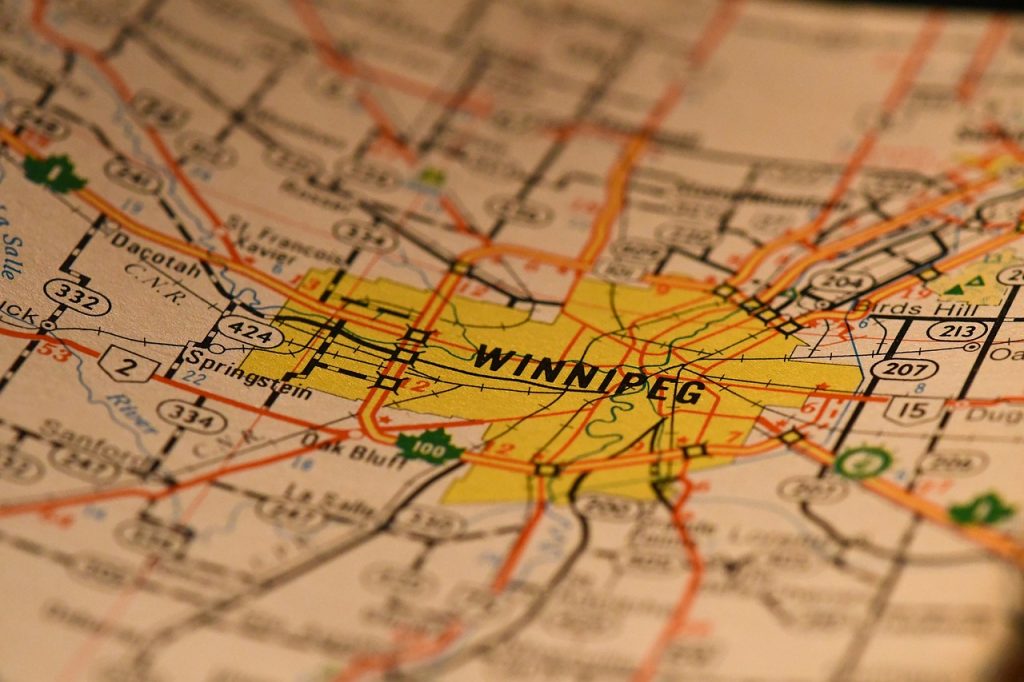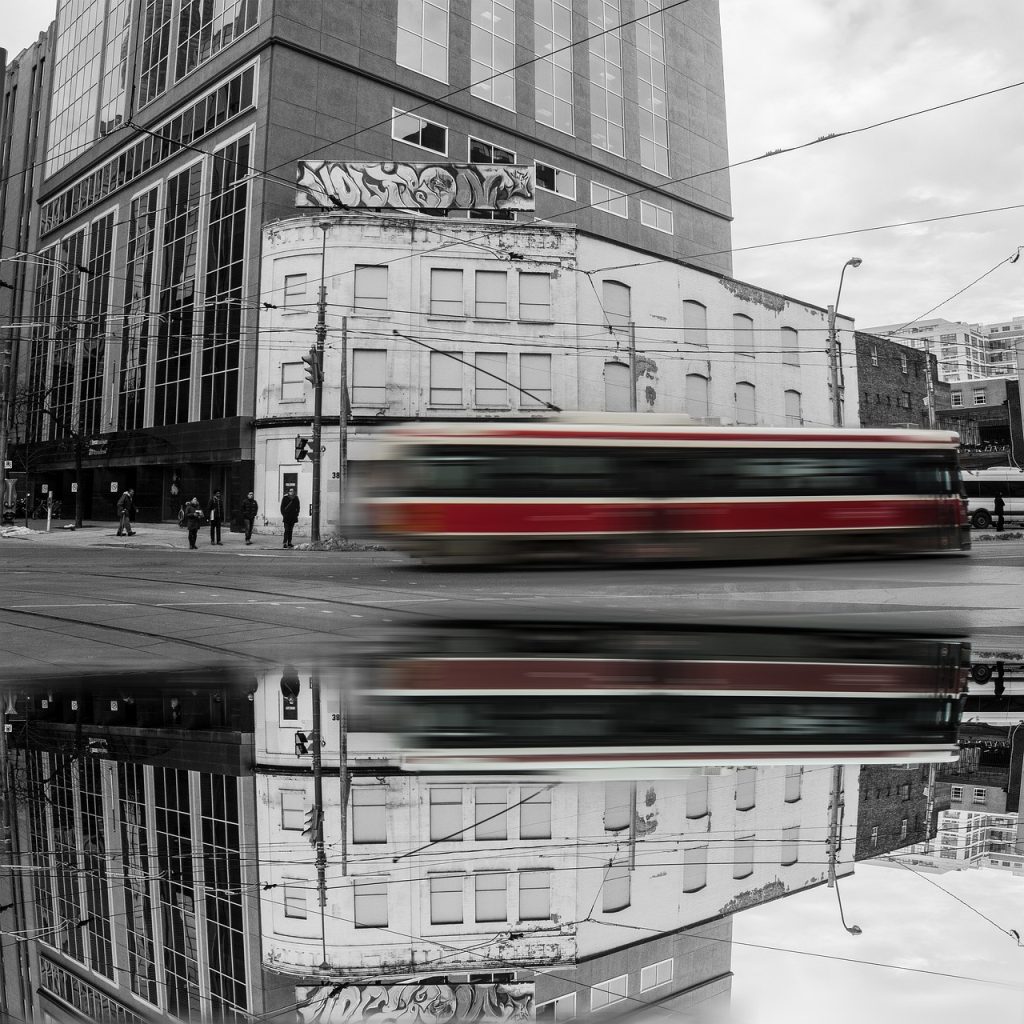Have you ever wondered about the various transportation options available in Canadian cities? From buses and subways to taxis and ferries, there is no shortage of ways to navigate the bustling streets of cities like Toronto, Vancouver, and Montreal. In this article, we will take a closer look at the public transportation options in Canadian cities, highlighting the benefits they offer and how they contribute to sustainable and efficient urban transportation systems. So hop on board as we explore the world of public transportation in Canada!
1. Overview of Public Transportation in Canadian Cities
1.1 History and development
Public transportation in Canadian cities has a rich history that dates back to the late 19th century with the introduction of horse-drawn streetcars. Over the years, advancements in technology and changing transportation needs have led to the development of a diverse range of public transportation options. From the iconic red buses in Toronto to the efficient light rail transit systems in Calgary and Vancouver, Canadian cities have invested heavily in creating comprehensive public transportation networks.
1.2 Importance and usage
Public transportation plays a crucial role in Canadian cities as it provides an affordable and convenient mode of transportation for residents and visitors alike. It helps ease traffic congestion, reduce greenhouse gas emissions, and promote sustainable urban development. According to Statistics Canada, around 17.5 million Canadians use public transportation regularly, accounting for approximately 12% of all trips made in urban areas. With the increasing focus on creating vibrant and livable cities, public transportation has become a key component in ensuring accessibility and mobility for all.
1.3 Benefits and drawbacks
The extensive public transportation networks in Canadian cities offer numerous benefits. They provide an alternative to private vehicle ownership, reducing the reliance on fossil fuels and decreasing air pollution levels. Public transportation also promotes social equity by providing affordable transportation options, particularly for those who cannot afford to own a car. Additionally, it helps alleviate congestion on roads, leading to reduced travel times and improved overall efficiency.
However, there are also some drawbacks associated with public transportation. Delays and disruptions can occur, impacting punctuality and reliability. Additionally, overcrowding during peak hours can make commuting uncomfortable for passengers. Moreover, the extensive coverage of public transportation networks may vary between cities, with some areas experiencing limited service, making it challenging for residents in certain neighborhoods to access reliable transportation options.

2. Types of Public Transportation
2.1 Buses
Buses are the most common form of public transportation in Canadian cities, providing a flexible and extensive network that connects various neighborhoods. They are well-suited for urban areas with dispersed population centers, offering frequent stops and routes that reach even the most remote corners of the city. Buses are generally considered affordable and accessible, making them a popular choice among commuters.
2.2 Trains
Trains, including commuter and regional rail services, are another crucial component of public transportation in Canadian cities. They offer a faster and more efficient mode of transportation, connecting suburbs and outlying areas to city centers. Train systems provide reliable services with fixed schedules, making them an attractive option for commuters who require longer-distance travel.
2.3 Light Rail Transit (LRT)
Light rail transit (LRT) systems are gaining popularity in Canadian cities due to their ability to efficiently transport large numbers of passengers. LRT lines often have dedicated tracks and separate rights-of-way, allowing them to bypass congested roadways. They serve as a bridge between bus services and heavy rail systems, offering a balance between speed, capacity, and cost-effectiveness.
2.4 Subways
Subways, also known as metro systems, are most commonly found in larger Canadian cities. These underground rapid transit networks are known for high-capacity and fast travel. Subways provide fast and reliable transportation for commuters traveling longer distances, helping alleviate congestion on roads. They are especially beneficial in densely populated areas.
2.5 Streetcars
Streetcars, or tramways, are a traditional mode of public transportation that make use of tracks embedded in city streets. They are generally found in historic neighborhoods and city centers, providing a charming and nostalgic way to explore the city. While streetcars have a slower average speed than buses or trains, they are popular among tourists and locals alike, offering a unique experience.
2.6 Ferries
Ferry services are essential in cities located near bodies of water, such as Vancouver and Halifax. Ferries provide a scenic mode of transportation, connecting island communities and waterfront destinations with the mainland. They offer an alternative to road travel and are particularly useful for commuters and tourists alike, offering beautiful views and a relaxing journey.
2.7 Taxis and Rideshare
Taxis and rideshare services, such as Uber and Lyft, also contribute to the public transportation options in Canadian cities. While they are not part of traditional public transportation systems, they provide a convenient and flexible way to travel, especially for those who prefer door-to-door service. Taxis and rideshare services are particularly useful for travelers with heavy luggage or those in need of direct transportation.
2.8 Cycling Infrastructure
Many Canadian cities have invested in cycling infrastructure, including dedicated bike lanes and bike-sharing programs. While not typically classified as public transportation, cycling provides an eco-friendly and healthy mode of transportation. It is often integrated with other public transportation options, allowing passengers to combine cycling with buses, trains, or subways for a seamless journey.
2.9 Walking
Walking is another important mode of transportation in Canadian cities, particularly for short-distance trips. Well-designed pedestrian infrastructure and walkable neighborhoods make walking a viable option for many people. Walking is not only a sustainable mode of transportation but also offers health benefits and the opportunity to explore the surroundings.

3. Major Public Transportation Systems in Canadian Cities
3.1 Toronto Transit Commission (TTC)
The Toronto Transit Commission (TTC) operates one of the largest public transportation networks in North America. With a comprehensive system of buses, subway lines, and streetcars, the TTC serves the Greater Toronto Area (GTA). The subway system, known locally as the “TTC Rocket,” offers four lines that stretch across the city, providing quick and efficient travel for millions of commuters.
3.2 Société de transport de Montréal (STM)
The Société de transport de Montréal (STM) is responsible for public transportation in the city of Montreal. STM operates an extensive network of buses and subway lines, connecting various neighborhoods within the city and surrounding suburbs. The STM subway system, commonly referred to as the Metro, is known for its distinctive architecture and serves as a vital mode of transportation for Montrealers.
3.3 TransLink (Vancouver)
TransLink is the transportation authority in the Greater Vancouver region and oversees an integrated public transportation system. This system includes rapid transit trains (SkyTrain), buses, SeaBus, and West Coast Express. TransLink’s SkyTrain network is a driverless light metro system that serves Vancouver and its surrounding areas, providing efficient and convenient transportation options.
3.4 Calgary Transit
Calgary Transit operates the public transportation system in the city of Calgary, Alberta. The system includes a comprehensive network of buses, the CTrain light rail transit system, and On-It regional transit services. The CTrain is a popular mode of transportation in Calgary, offering four lines that connect various neighborhoods and transportation hubs.
3.5 Edmonton Transit Service (ETS)
The Edmonton Transit Service (ETS) manages public transportation in the city of Edmonton, Alberta. The ETS operates an extensive fleet of buses and the Edmonton Light Rail Transit (LRT) system, known as the Capital Line and Metro Line. The LRT system provides efficient transportation options for commuters and also serves major attractions and educational institutions within the city.
3.6 OC Transpo (Ottawa)
OC Transpo is responsible for public transportation in Ottawa, the capital city of Canada. The transit system includes a comprehensive network of buses and the O-Train light rail transit system. The O-Train, consisting of the Trillium Line and Confederation Line, connects various neighborhoods within Ottawa and provides direct access to major government offices and institutions.
3.7 Winnipeg Transit
Winnipeg Transit operates the public transportation system in the city of Winnipeg, Manitoba. The system consists of a fleet of buses that serve the urban and suburban areas of Winnipeg. Winnipeg Transit provides an affordable and efficient mode of transportation for residents and visitors, helping them navigate the city and connect to various destinations.
3.8 Halifax Transit
Halifax Transit is responsible for public transportation in the Halifax Regional Municipality in Nova Scotia. The transit system includes a fleet of buses and ferries that provide transportation options throughout the municipality. Halifax Transit’s ferry services, including the popular Halifax-Dartmouth ferry, connect the downtown areas of Halifax and Dartmouth while offering stunning views of the city’s harbor.
This is just the beginning of this comprehensive article. Please let me know if you would like to continue with the rest of the outline.

